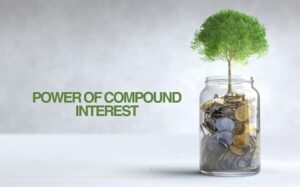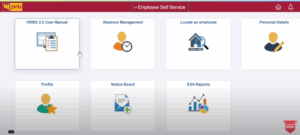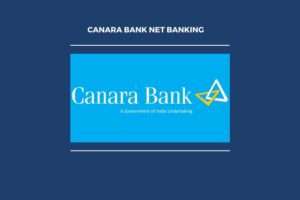Comparing Popular Financial Derivative Products

Financial derivatives are financial contracts that derive their value from something else, like a stock price, currency exchange rate, or even the price of oil. They’re a popular option, with billions of derivatives getting traded every year the world over.
But while they’re a powerful tool for investors, they come with plenty of responsibility (and a little complexity). This guide will break down popular financial derivative products to show how they work and why they might be useful for you.

1. Futures Contracts
Say you’re a farmer who grows wheat. You’re worried that by harvest time, wheat prices might fall. To protect yourself, you can enter into a futures contract to sell your wheat at a predetermined price in a few months. This way, you lock in a profit margin regardless of what the market price does.
Contracts for Difference (CFDs)
Trading CFDs is another popular way to take part in the over USD$1 quadrillion derivatives market.
Say you think a company’s stock price is going to shoot up, but you don’t have the capital to buy the actual shares. CFDs make it possible for you to make a move regardless. A CFD is an agreement with a broker to speculate on the price movement of an underlying asset, like a stock, currency, or commodity, without actually owning it.
Here’s the key difference: CFDs allow you to use leverage, which means you can control a larger position by putting up a smaller amount of money upfront (called a margin).
Let’s say a stock is currently trading at USD$10 per share. You believe the price will rise and you want to control 100 shares. Instead of needing USD$1,000 to buy the stock outright, you could potentially use a CFD with a 10% margin requirement.
This means you would only need to put up USD$100 upfront (10% of USD$1,000) and control the CFD representing 100 shares. If the stock price goes up to USD$12 per share, you would see a profit on the 100 CFD shares you control, even though you never actually owned the stock itself.
The allure of leverage is a double-edged sword. While it can magnify your profits if the market moves in your favor, it can also magnify your losses if the market moves against you.
2. Options Contracts
So, you think a particular stock price is going to rise significantly in the next few months? You could buy a call option on that stock. This gives you the right, but not the obligation, to buy the stock at a certain price by a specific date.
If the stock price goes up as expected, you can exercise your option to buy at the lower price and then immediately sell at the higher market price for a profit. However, if the stock price falls, your option expires, and you only lose the cost of the option itself.
3. Swaps Contracts
Swaps are like financial customized contracts between two parties to swap cash flows based on something else, like interest rates, currencies, or even commodities. Studies show that this is a common tool among banks to the tune of over USD$434 billion. [3]
But these aren’t limited to financial institutions alone. Here are common types of swaps in action:
Interest Rate Swaps
Take two companies:
Company A: A fast-growing tech company with a significant amount of variable-rate debt. This means their interest rate payments fluctuate based on market rates. This can make it difficult to budget and forecast future expenses.
Company B: A well-established insurance company with a large pool of fixed-income investments. They have a predictable stream of cash flow but might be looking for higher returns.
The Swap Agreement
Company A and Company B enter into an interest rate swap agreement. Here’s how it might work:
Company A: Agrees to pay Company B a fixed-interest rate for a specific period (say, 5%). This provides Company A with the predictability they crave for their variable-rate debt.
Company B: Agrees to pay Company A a floating interest rate tied to a benchmark rate like the London Interbank Offer Rate (LIBOR). This allows Company B to potentially earn higher returns on their investment compared to their traditional fixed-income portfolio.
Derivative Connection
This swap functions as a derivative because:
Underlying Asset
The swap derives its value from the floating interest rate benchmark (LIBOR). The cash flows exchanged between the companies are based on the fluctuations in this benchmark rate.
Risk Management
Company A uses the swap to hedge against rising interest rates, protecting their profits from unexpected increases in borrowing costs. Company B uses the swap to potentially earn higher returns than their traditional fixed-income options.
Contractual Agreement
The swap is a formal agreement between two parties outlining the exchange of cash flows based on the underlying interest rate benchmark.
In Closing
That’s your crash course in some of the most common financial derivatives. Remember, these are powerful tools, but with great power comes responsibility (and little research, too). Before getting started, be sure to understand the risks involved and how each derivative works.
Sources
- “Largest derivatives exchanges worldwide from 2020 to 2022, by number of contracts traded(in millions)“, Source: https://www.statista.com/statistics/272832/largest-international-futures-exchanges-by-number-of-contracts-traded/
- “How Big Is the Derivatives Market?”, Source: https://www.investopedia.com/ask/answers/052715/how-big-derivatives-market.asp
- “Do Banks Hedge Using Interest Rate Swaps?” Source: https://www.cftc.gov/sites/default/files/2024-04/Banks_and_Derivatives%20(11)%20-%20ada.pdf

Pranab Bhandari is an Editor of the Financial Blog “Financebuzz”. Apart from writing informative financial articles for his blog, he is a regular contributor to many national and international publications namely Tweak Your Biz, Growth Rocks ETC.






